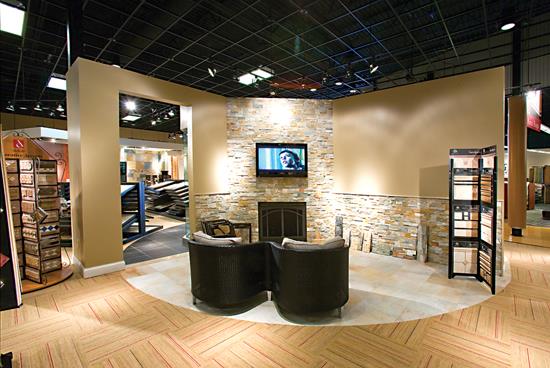Merchandising: Create a destination, not a point of purchase
By Andy Wells
When a customer walks through the door of a flooring retailer, they are looking to the retailer for a solution. They need more than products; they also need context. They seek confidence, hopefully enough confidence to upgrade, and they also desire satisfaction with the overall experience, the kind that makes them want to refer the retailer. Referral, after all, is a very powerful marketing tool.
So much research has told us that the consumer is not satisfied with the retail merchandising experience, whether shopping for flooring or cabinets or drapes. We all have a lot of work to do to up our game.
It’s time to rethink, change up your presentation. Do you offer something beyond samples? Take a good hard look at your retail space. When was it last really changed? Be honest with yourself.
Is your showroom bursting with an unruly sea of sample books, boards and color posters? Have you allowed manufacturing representatives to add more clutter with their latest displays? It’s time to rethink and recast how we present our products to the customer.
So how do we rethink it? The steps can be quite simple. Empathy is the key. Imagine yourself in the consumer’s shoes for a moment: not experts at all, consumers have a huge unmet need, and it’s not necessarily just about flooring. Most people walk in, see hundreds of square feet of samples, and they are overwhelmed, with no clue where to start.
Merchandising is about clarity, not clutter, and it’s vital to present product in context. Put away all of those confusing sample boards and books in a separate room, carefully stored in relevant groups, by type and style. Then the real work begins.
Design your space like a museum with exhibits—a modern exhibit, a traditional exhibit, coastal, industrial, tropical and so on. Prepare storyboards in many different styles, so customers can easily identify their preferences. They should be able to look and say, “Yes, this is my style. I’m American traditional.” This is what our consumer is looking for.
We need to be the experts, and not just about flooring. Our client knows that the experience of remodeling or building a new home is about fashion. We are not just selling flooring. It’s a packaged solution that we must provide. Like a good window dressing at Macy’s that combines the jewelry, scarf, purse and shoes with the dress, we need to show the customer how the flooring fits with the other elements in a room. This might well mean that the personal storyboard includes all adjacencies in the project. Pair flooring with samples of paint, blinds, drapes, cabinets and hardware. Your exhibits may even expand to include an adjoining space. These are all important elements in confidence building.
Our consumer is looking for a personalized experience, so it is critical to get to know each customer’s needs far beyond price point. No one knows better than you the kind of customers who walk through your door—where they live, their type of homes, where they might work—but do you apply it to a personal solution? Is that solution visible in your showroom?
Defining style, addressing adjacencies, all of this comes way before discussing budget. By the time that question arises, they will be far more comfortable (given a rethink in how we approach their needs). This is where we can shine. It’s a very personal thing.
|
MAXIMIZE YOUR MERCHANDISING |
|
Reduce clutter. |
Copyright 2014 Floor Focus
